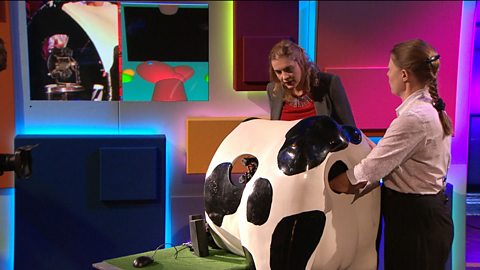Professor Danielle George demonstrates the worldβs fastest puzzle cube solver and explains how it works using just a smartphone and bricks.
The smartphone takes photographs of the cube using its built-in camera and the software works out the fastest way to solve the cube.
The smartphone then sends instructions to the mechanical arms to tell them which parts of the cube to rotate.
The puzzle cube solver is a prime example of how electronics in our everyday lives are capable of doing unexpected things.
This clip is from The Royal Institute Christmas Lectures 2014.
Teacher Notes
Key Stage 3
Introduction β Discuss how colour is represented in a computer system as a combination of Red-Green-Blue binary numbers and how a photograph from a digital camera is simply an array of pixels with the RGB data stored as a binary number.
Video questions for pupils:
1. Is there an industrial / scientific / practical use for a system like that which solves a puzzle cube (give at least two examples)?2. Considering that the system in the video solved the puzzle cube in just over four seconds, what else can a computer program do so much faster than a human (give at least two examples)?
3. Are there any tasks where a human can solve a problem faster than a computer (give at least two examples)?
Activities:
Consider that the program solves the puzzle cube using a set of programmed procedures simply combined to complete the task. Pupils should be challenged to re-arrange these procedures into the correct sequence to perform a few tasks.
Each procedure can be used more than once or not at all and further instructions need to be added inside the brackets:
1. Drop / Place (β¦)
2. Pick up (β¦)
3. Move to (β¦)
4. Throw (β¦)
5. Eat (β¦)
6. Slide (β¦)
7. Apply (β¦)
8. Print (β¦)
9. Activate (β¦)
10. Speak (β¦)
The tasks are as follows:
- You are working in an online shopping warehouse and your job is to put some headphones into a cardboard parcel, sealing it with tape and dropping it onto a conveyor belt after the box has been labelled from a printer.
- You are preparing a sandwich with two slices of bread, butter, cheese, tomato and lettuce, which will be served on a plate.
- You are a referee for your local sports team and a player has just committed a foul resulting in a warning where a yellow card needs showing and you need to warn the player.
The teacher can interact with their class, giving analogies with how modular programs can mean a team of programmers can each work on a separate procedure as long as they follow a standard set of rules.
Key Stage 4
Additional material:
Pupils will be given the program for an array for a chess board and each pupil will be responsible to write the code needed to move one chess piece and interact with the array.
chess_board=
| A Β | B Β | C Β | D Β | E Β | F Β | G Β | H Β | I Β |
| 1 | bc | bk | bb | bk | bq | bb | bk | bc |
| 2 | bp | bp | bp | bp | bp | bp | bp | bp |
| 3 | 00 | 00 | 00 | 00 | 00 | 00 | 00 | 00 |
| 4 | 00 | 00 | 00 | 00 | 00 | 00 | 00 | 00 |
| 5 | 00 | 00 | 00 | 00 | 00 | 00 | 00 | 00 |
| 6 | 00 | 00 | 00 | 00 | 00 | 00 | 00 | 00 |
| 7 | wp | wp | wp | wp | wp | wp | wp | wp |
| 8 | wc | wk | wb | wq | wk | wb | wk | wc |
- More advanced programmers can add to this by having the pieces interact with one another (such as the knight being able to jump over other pieces or that the pawn can only move forwards or diagonal one place when taking another)
- Less advanced programmers can concentrate on the moves.
Curriculum Notes
These clips will be relevant for teaching Computing, ICT and Computer Science at KS3 and GCSE/KS4 in England, Wales and Northern Ireland and 2nd Level and National 4/5 in Scotland.
The topics discussed will support OCR, Edexcel, AQA,WJEC GCSE in GCSE in England and Wales, CCEA GCSE in Northern Ireland and SQA National 4/5 in Scotland.

More from The Royal Institute Christmas Lectures 2014:
Feedback loops. video
Professor Danielle George demonstrates what feedback loops are by asking a child to match the note that she plays on a swanee whistle.
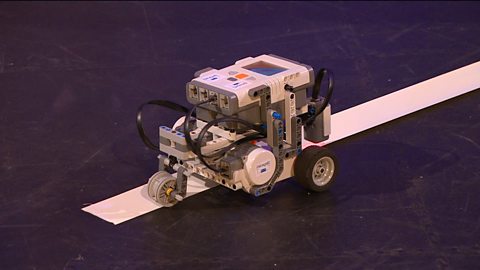
How does a digital camera work? video
Professor Danielle George explains how a digital cameraβs CMOS sensor captures an image, using balls and buckets to represent photons, electrons and capacitors.

How LED screens work. video
Professor Danielle George explains how an LED screen works, showing how the individual LEDs are controlled by switches.
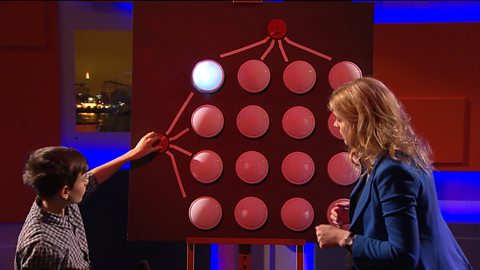
How robots can work together in a swarm. video
Paul Beardsley from Disney Research Zurich explains how the 50 pixelbot robots work together in a swarm to create animations.
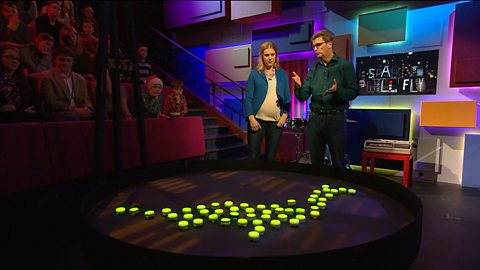
The Mars Rover and autonomous navigation. video
ExoMars Rover Engineer Abbie Hutty, from Airbus Defence and Space, explains how the Mars Rover uses 3D cameras to create a map of the Mars landscape.

What can 3D printing be used for? video
Professor Danielle George explains how 3D printing works and demonstrates an object being printed in real time.
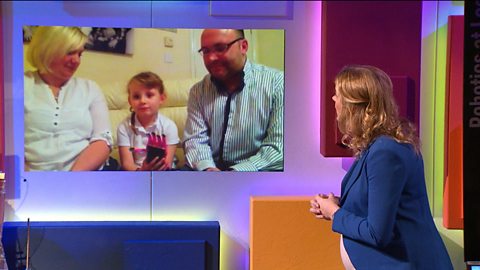
Touching virtual objects. video
How haptic technology allows you feel things that arenβt really there. Professor Danielle George demonstrates using a βhaptic cowβ.
